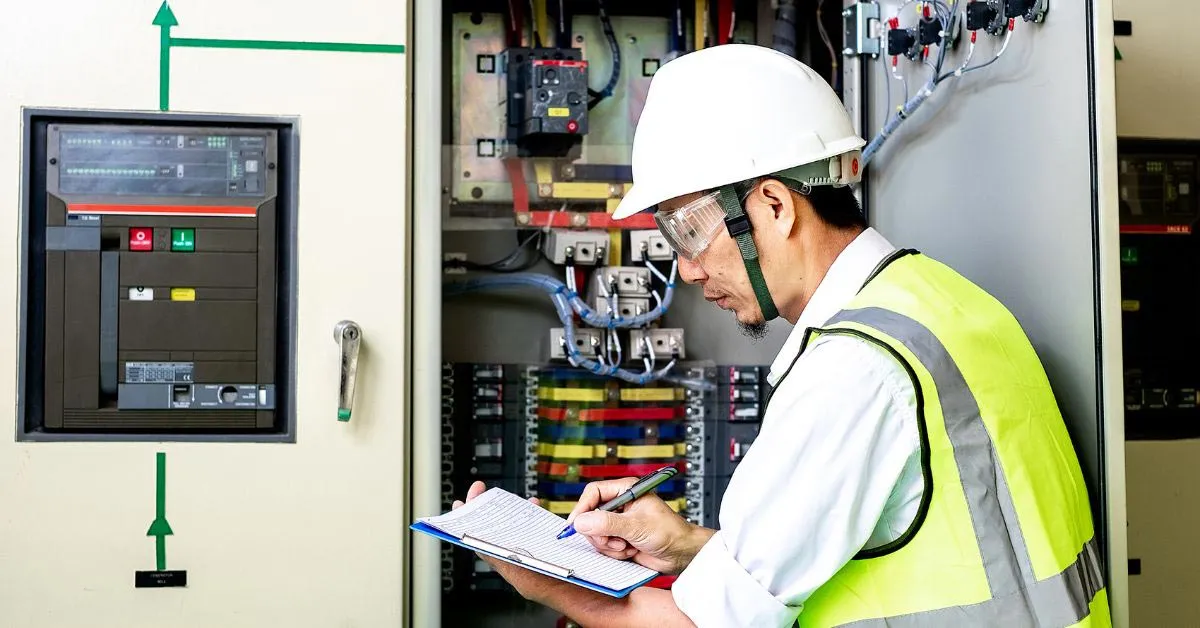Programmable Logic Controllers (PLCs) are the backbone of modern industrial automation systems. From manufacturing plants to oil rigs, they control critical processes with unmatched precision and reliability. Yet, like all sophisticated systems, PLCs are not immune to occasional malfunctions or programming errors. For engineers in the field, particularly in Nigeria’s thriving industrial sector, understanding how to troubleshoot PLC issues effectively can save valuable time, reduce downtime, and enhance productivity.
Why Troubleshooting PLC Issues Requires a Systematic Approach
Troubleshooting PLC (Programmable Logic Controller) programming issues can often feel overwhelming, especially when critical, time-sensitive operations are at risk. However, the key to effectively addressing these challenges lies in adopting a systematic approach that breaks down the problem into manageable steps. Since every PLC is a complex system consisting of both hardware and software components, and often involves external devices such as sensors, actuators, and other connected equipment, the causes of faults can stem from multiple sources.
These issues may manifest in various ways, such as unexpected machine halts, outputs that deviate from expected values, or breakdowns in communication between devices. Such problems can disrupt operations, lead to production delays, and escalate costs. Whether the issue is due to wiring errors, logic misconfigurations, or external interference such as electromagnetic disturbances, a thorough and methodical approach is essential to diagnosing and fixing the problem efficiently. Here’s why troubleshooting PLC issues requires a structured process:
- Multiple Sources of Potential Problems: A PLC’s operation is influenced by various factors, including electrical wiring, input/output devices, and software configuration. Since faults can originate from any part of this system, the troubleshooting process needs to be comprehensive, investigating each component systematically. By narrowing down potential causes, engineers can pinpoint the exact issue more quickly.
- Prevention of Recurrence: Simply fixing the immediate issue is not enough. A structured troubleshooting approach helps engineers identify the root cause of the fault. By understanding why the problem occurred in the first place, engineers can implement corrective actions that prevent similar issues from arising in the future. This could involve reviewing wiring practices, reconfiguring logic, or shielding sensitive devices from interference.
- Minimizing Downtime: PLC-related failures can result in significant downtime, impacting productivity and profitability. A systematic approach helps engineers reduce troubleshooting time by using diagnostic tools, error codes, and other diagnostic features built into the PLC system. This focused approach leads to faster identification and resolution of the issue, minimizing operational disruptions.
- Efficient Use of Resources: A well-planned troubleshooting process ensures that engineers use their time, tools, and expertise effectively. Instead of relying on guesswork or trial and error, engineers can follow a structured diagnostic flow, examining the most likely causes first. This not only speeds up the resolution process but also optimizes resource utilization.
- Understanding Complex Interactions: PLC systems often involve intricate interdependencies between hardware, software, and external devices. A methodical troubleshooting approach helps engineers understand how changes in one component might affect others. For example, a fault in a sensor might lead to incorrect data being fed to the PLC, causing unexpected output behavior. By following a logical sequence of steps, engineers can ensure that all aspects of the system are thoroughly checked.
Troubleshooting PLC issues requires a structured, step-by-step approach that accounts for the complexity of the system and its components. By diagnosing the issue systematically, engineers not only fix the immediate problem but also gain insights that help prevent future faults. This methodical process ensures that PLC systems continue to operate efficiently and reliably, minimizing downtime and maintaining smooth operations.
Understanding the Foundations of PLC Troubleshooting
The process of troubleshooting a PLC (Programmable Logic Controller) system requires a deep understanding of the system’s architecture. Engineers must be familiar with several key components, including control logic, input/output (I/O) modules, communication networks, and the programming environment. Without a solid grasp of these foundational elements, identifying and resolving issues can quickly become an exercise in frustration. By understanding how the system works as a whole, engineers are better equipped to troubleshoot efficiently and pinpoint the root cause of problems.
Control Logic: Understanding the control logic is essential for troubleshooting PLC issues. The control logic dictates how the PLC processes inputs, executes instructions, and triggers outputs. If the control logic is not well understood, even simple faults can be misdiagnosed or overlooked. Engineers need to ensure they are familiar with the specific logic used in the PLC program, including ladder logic or function block diagrams, and how different control processes interact with each other.
Input/Output (I/O) Modules: The I/O modules of a PLC are critical for interacting with external devices such as sensors, actuators, and machines. Issues in I/O modules, such as faulty sensors or wiring errors, can disrupt communication between the PLC and the machinery. Engineers should be well-versed in how the I/O modules are configured and how data is transferred between the PLC and the connected devices. Diagnosing I/O issues often involves checking for wiring errors, misconfigurations, or device failures.
Communication Networks: Many modern PLC systems rely on communication networks to interact with other systems, devices, or control systems. Communication faults, such as issues with fieldbus systems, network cables, or protocols (e.g., Modbus, Profibus, or Ethernet/IP), can lead to breakdowns in data exchange. Engineers need to understand the communication protocols in use and be able to diagnose issues related to signal interference, incorrect wiring, or misconfigured network settings.
Programming Environment: The programming environment, where the PLC logic is designed and deployed, is another critical element of PLC systems. A solid understanding of the specific programming software and tools used to create and edit PLC programs is vital. Engineers must be able to navigate the programming environment, monitor running programs, and make necessary modifications in case of logic errors. Familiarity with debugging tools and simulation features can also speed up the troubleshooting process.
Proper Documentation: One often-overlooked but incredibly valuable aspect of effective troubleshooting is maintaining accurate documentation. Industrial systems, especially in complex environments, generate vast amounts of data in the form of logs, system messages, and error reports. Reviewing these logs can provide vital insights into the nature and cause of the problem.
For engineers working in industries where system complexity is increasing—such as those in Nigeria—having up-to-date and organized documentation is indispensable. This includes detailed records of hardware configurations, wiring schematics, and the PLC programming logic. When problems arise, these documents act as critical references, helping engineers identify issues more efficiently. Moreover, well-maintained documentation can also be beneficial for future upgrades or repairs. It ensures that engineers have a historical record of how the system was designed, configured, and modified over time, which helps in preventing recurrent issues and streamlining future troubleshooting.
Troubleshooting PLC systems successfully requires a deep understanding of the system architecture, including control logic, I/O modules, communication networks, and the programming environment. Additionally, maintaining thorough and accurate documentation plays a crucial role in quickly diagnosing problems and providing context for long-term solutions. By building a strong foundation in both technical knowledge and proper documentation practices, engineers can approach troubleshooting with greater confidence and effectiveness.
Addressing Common PLC Programming Challenges
One of the most common challenges faced in PLC (Programmable Logic Controller) programming is errors in the logic itself. These errors can arise from a variety of factors such as misconfigured instructions, overlooked interlocks, or improper sequencing of events. Even a small mistake in the program logic can result in unexpected behavior, such as machinery failing to perform as intended or causing system shutdowns. When troubleshooting these types of issues, engineers should begin by thoroughly reviewing the program logic. They need to check for errors like improper condition checks, incorrect timers, or logic conflicts that could disrupt the normal operation of the system.
Modern PLC programming software typically includes simulation tools, which can be a powerful resource in identifying logic errors before they impact the physical system. These simulation tools allow engineers to test the code in a virtual environment, where they can observe how the program would behave in real-world conditions without the risk of causing disruptions. Using this feature can help engineers validate their logic and ensure that the control sequences work as expected, which minimizes the potential for costly on-site errors. In addition, this virtual testing offers the opportunity to catch issues early in the design phase, saving both time and money.
Another prevalent issue in PLC systems is communication failures. Industrial PLCs often rely on communication protocols such as Modbus, Ethernet/IP, or Profibus to connect with external devices and systems. When communication breaks down, it can prevent the PLC from properly exchanging data with sensors, actuators, or other systems, causing operational inefficiencies or total system failures. Engineers need to methodically trace the communication pathways to identify the root cause of the breakdown. Common causes include damaged cables, incorrect IP configurations, or software incompatibilities. A systematic approach to troubleshooting communication failures involves checking cable connections for damage, verifying correct IP settings, and ensuring all devices in the communication network are compatible with one another.
Electrical noise is another significant challenge that often impacts PLC systems, particularly in industrial environments with high-power machinery. Electromagnetic interference (EMI) generated by machines like motors, welding equipment, or power transformers can disrupt the signals between the PLC and its connected devices. This interference can cause erratic system behavior, such as inaccurate readings or faulty outputs, and can even lead to system crashes. To mitigate electrical noise, engineers can employ several strategies. Using shielded cables to reduce the impact of electromagnetic interference, ensuring proper grounding of devices, and installing noise filters on power lines or communication cables can help prevent many of the issues caused by EMI.
In environments like those found in Nigerian industries, particularly in manufacturing and oil and gas, electrical noise is a frequent concern due to the presence of large and powerful machines. Addressing this issue through robust electrical design and noise-reducing measures is essential to ensure the long-term stability and reliability of PLC systems. Proper shielding and grounding not only help in reducing downtime but also contribute to smoother, more efficient operations.
In conclusion, troubleshooting PLC systems involves tackling a variety of potential issues, including errors in program logic, communication failures, and electrical noise. By following a systematic troubleshooting approach, such as validating the program logic with simulation tools, ensuring proper communication configurations, and mitigating electrical noise, engineers can resolve problems efficiently and improve system reliability. By addressing these challenges proactively, they can minimize downtime, enhance operational efficiency, and ensure that industrial systems perform optimally over time.t the electrical design is robust can prevent many common problems that arise from interference, leading to more stable and reliable PLC systems over time.
Leveraging Diagnostic Tools for Efficient Troubleshooting
Modern PLCs come equipped with advanced diagnostic tools that play a crucial role in simplifying the troubleshooting process. These tools, accessible via Human-Machine Interfaces (HMIs) or dedicated diagnostic software, allow engineers to monitor system performance in real-time, check for error codes, and pinpoint specific components that may have failed. When a problem arises, such as an I/O module failure, these diagnostic features can immediately identify the exact module and channel where the issue is occurring, eliminating much of the guesswork involved in traditional troubleshooting methods. This feature not only speeds up the diagnostic process but also ensures more accurate identification of issues, allowing engineers to focus on the root cause instead of wasting time on trial and error.
In addition to the built-in diagnostics found within PLC systems, external testing equipment also plays a vital role in troubleshooting. Tools like multimeters, oscilloscopes, and network analyzers are essential for identifying and diagnosing hardware-related issues. For example, a multimeter can be used to measure voltage levels and check for short circuits, ensuring that the electrical components are receiving proper power. Oscilloscopes are invaluable for detecting signal integrity problems, such as voltage spikes or frequency anomalies, which could affect the operation of the PLC or its connected devices. Network analyzers, on the other hand, help verify the health of communication networks, allowing engineers to identify issues like incorrect wiring, data transmission errors, or network traffic congestion that could be causing communication failures.
By combining the advanced diagnostic features built into modern PLCs with external testing equipment, engineers can approach troubleshooting in a more methodical and efficient way. These tools provide valuable insights into both the software and hardware components of a system, reducing downtime and improving overall system reliability. With the ability to quickly pinpoint and resolve issues, engineers can ensure smoother operations and minimize the risk of future disruptions.
The Importance of Preventive Maintenance in Avoiding Issues
While troubleshooting often comes in response to system failures, preventive maintenance is a proactive strategy that plays a critical role in minimizing disruptions and avoiding costly downtime. Regularly scheduled maintenance activities, such as inspecting hardware connections, updating firmware, and backing up programming logic, are essential practices for maintaining the long-term reliability and performance of PLC systems. In environments like those in Nigeria, where supply chain delays can extend downtime significantly, preventive maintenance becomes even more crucial. A failure in PLC components, if not addressed in time, could result in extended operational halts, which not only affects production but also increases repair costs. By staying on top of routine checks and maintaining the PLC’s hardware and software systems, engineers can identify potential issues before they escalate into critical failures, ultimately improving overall system uptime and reducing the need for emergency troubleshooting.
In addition to technical maintenance, training and knowledge-sharing among team members are vital to ensuring that troubleshooting and maintenance processes remain efficient and effective. As PLC technology continues to evolve rapidly, staying updated on the latest advancements, tools, and techniques is essential for engineers to remain competitive and effective in their roles. Participating in training programs, workshops, and industry conferences helps engineers deepen their expertise, learn about new troubleshooting methods, and familiarize themselves with emerging PLC technologies. This continuous learning ensures that engineers are better prepared to tackle new challenges and leverage the latest tools and solutions, ultimately enhancing their troubleshooting capabilities and preventing issues from arising in the first place. Furthermore, fostering a culture of knowledge-sharing within teams ensures that best practices are disseminated throughout the organization, promoting a more collaborative approach to system maintenance and troubleshooting.
By combining preventive maintenance with ongoing training and knowledge-sharing, engineers can significantly reduce the risk of PLC-related disruptions, improving the overall reliability of industrial systems and ensuring smoother operations.
Empowering Engineers to Tackle PLC Challenges
For engineers in Nigeria’s dynamic industrial landscape, troubleshooting PLC programming issues is both a technical skill and a strategic advantage. The ability to diagnose and resolve problems quickly minimizes downtime, reduces operational costs, and strengthens the reliability of industrial processes. Whether you are working in manufacturing, oil and gas, or construction, mastering the art of troubleshooting ensures that your systems remain robust and resilient in the face of challenges.
Stay Ahead in Industrial Engineering
At epci.ng, we are dedicated to equipping engineers with the knowledge and tools they need to excel in their careers. Whether you’re a seasoned professional or an aspiring engineer, our platform offers in-depth articles, expert advice, and the latest industry insights tailored to the EPCI sector. Don’t let PLC programming challenges slow you down—visit epci.ng today, sign up for exclusive content, and join a growing community of innovators shaping the future of industrial engineering.







Leave feedback about this